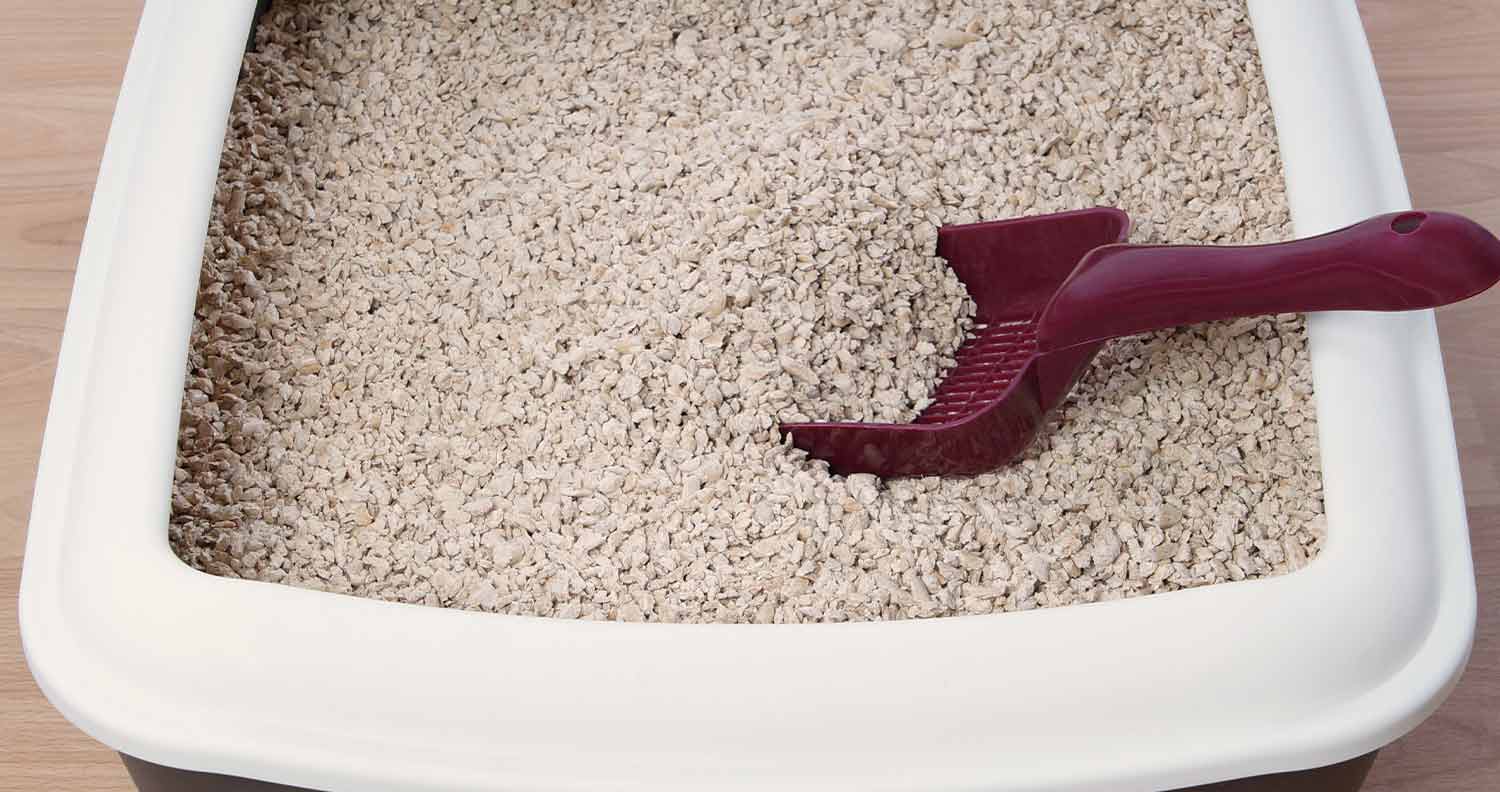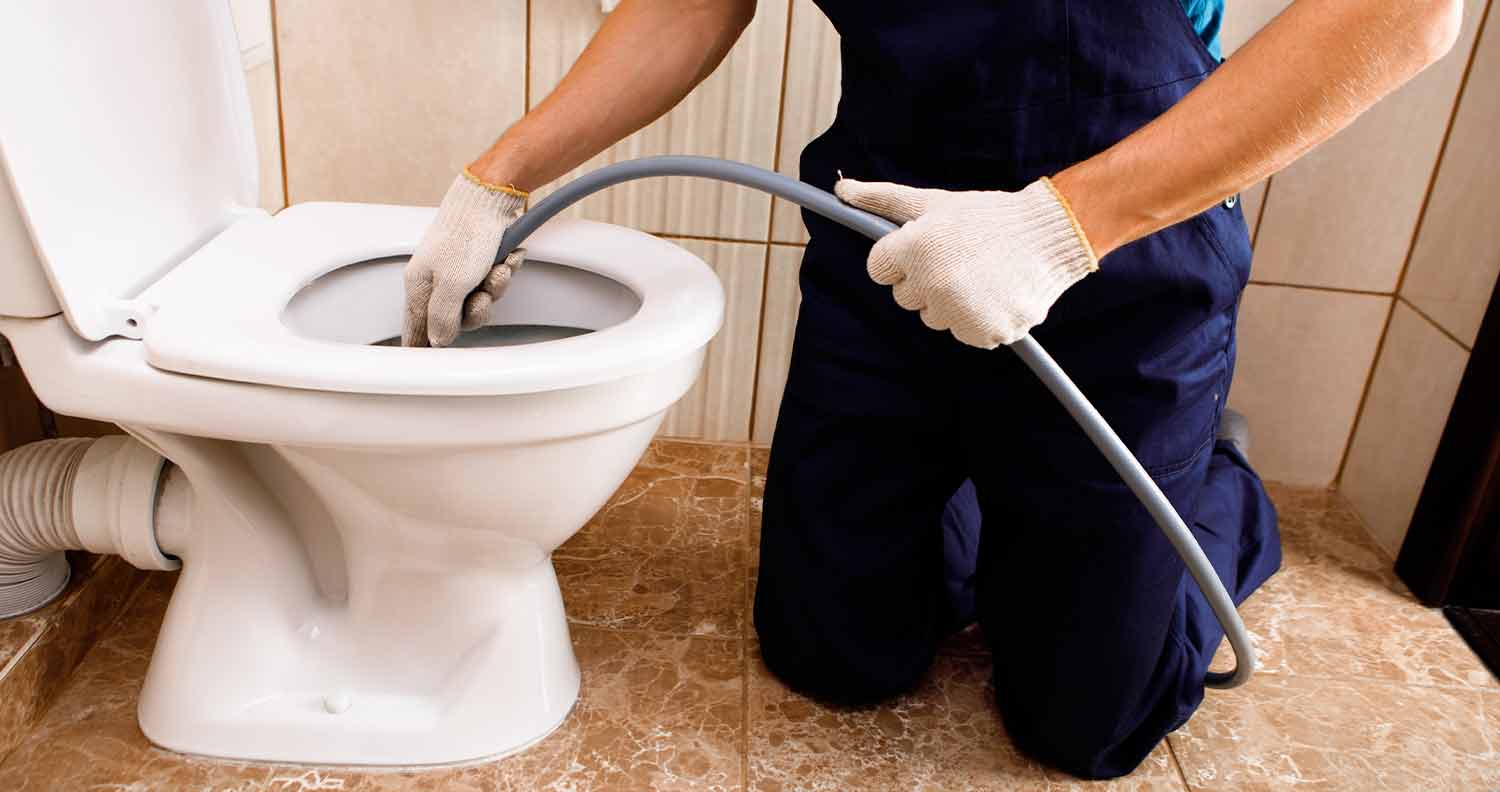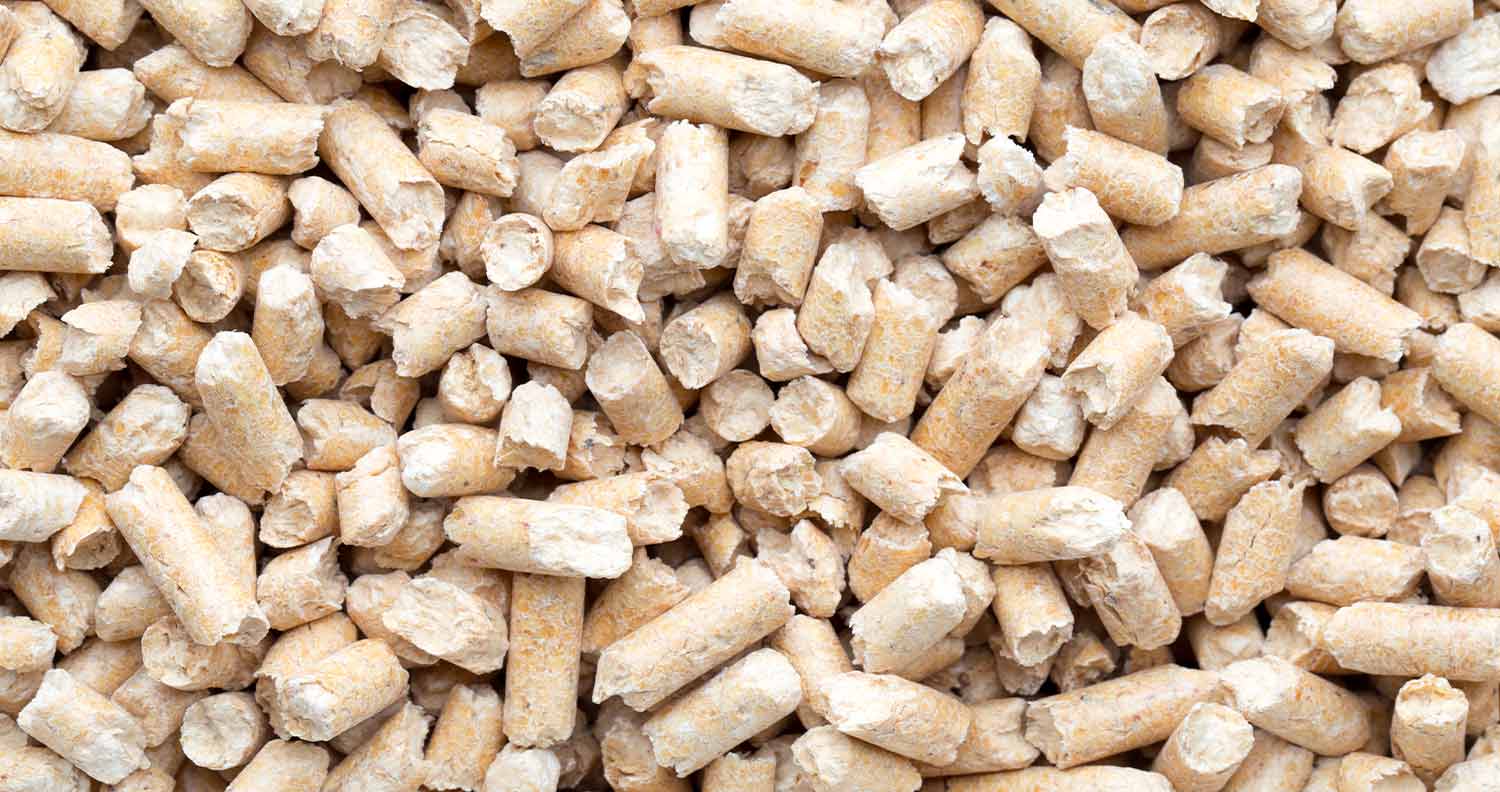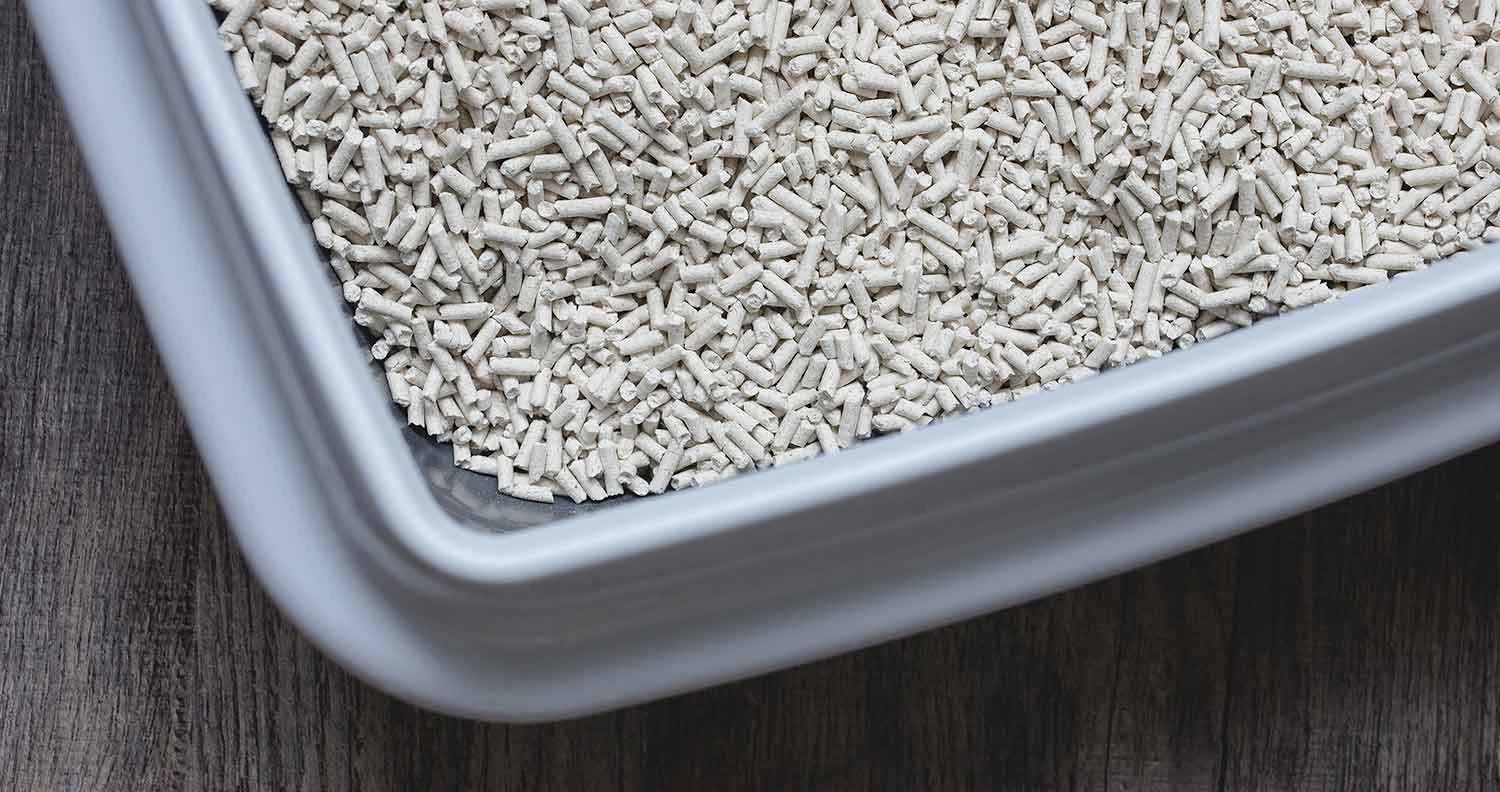Is Cat Litter Flushable? Can You Flush, But Should You?
Share:
When you go to the store to pick up a box or bag of cat litter, there are a few things you're most likely looking for. In the majority of cases, most people expect their cat litter to fight odors as well as clump together around a cat's toilet treasures.
As such, you might find it more than a little bit crazy to think that you can "flush" cat litter down the toilet rather than dumping it out in the trash. And while you'd be right nine out of 10 times, some options can be flushed without causing a mess in your toilet.
There is, however, a big issue with whether it's a sound environmental and health choice because there's going to be potentially toxic stuff in your cat's poop that is in that flushable litter and we'll look at that later on.

In this article, we'll break down why you shouldn't normally flush cat litter down your toilet as well as some examples of different litter types that can be flushed.
We'll aslo be breaking down if there are any potential long-term effects that come with flushing any litter down your toilet, regardless of what may or may not happen to your toilet and home specifically.
Is Cat Litter Flushable? In Short!
Generally, it s a BIG no! Cat litter should not be flushed down the toilet. Cat litter is designed to absorb moisture and odors, and disposing of it down the loo can cause clogs in plumbing systems, especially if it is not a flushable type of litter.
Additionally, many types of cat litter contain sodium bentonite, which is used to plug holes and seal landfills. This clay additive, or other materials, are not biodegradable and can harm the environment if they are released into sewage systems or bodies of water.
If you want to dispose of cat litter, it's best to place pet waste litter in a sealed plastic bag or a cat waste bin and throw it in the trash.
What's The Big Deal With Flushing Cat Litter?
Ok, so most people tend to bag their litter up from the litter box and chuck it in the garbage bin. Why not just flush it?
For many elderly owners of cats as well as very busy people, it can seem a bit of an unnecessary step to scoop it, bag it, and set it in the trash rather than just pour it all down the drain.
So what's the big issue here? Well, as it turns out, flushing your cat litter is actually a pretty huge issue.
Because most new litter is made from clumping clay litter or silica cat litter, they are highly absorbent while also "clumping" when exposed to any moisture or liquid.
When it comes to handling your cat's urine and feces, this is a very useful feature as it makes scooping and trashing much easier while also more effectively covering the smell.
Unfortunately, that same usefulness immediately becomes an issue when poured down a drain or flushed down the toilet.

Read this next: Best Litter Mat: Cat Litter Box Traps That Work!
Plumbing Disaster!
This is because that absorbent clay and silica material, when flushed, will clump together and expand while in your waste pipes, causing a blockage.
This blockage may be relatively small, only causing your toilet to back up, or relatively minor problems with your internal plumbing or septic tank, or it can be much worse.
In some instances, so much of the litter can be flushed that it creates a cement-like situation in your pipes, requiring a complete replacement of your entire plumbing system, and that's only if it doesn't enter the wider water system, causing problems for your whole neighborhood.
So, suffice it to say, while it may be more convenient at the moment, flushing standard cat litter down your toilet is just not worth the bigger stress and headache.
But what about flushable cat litter?
What Is Flushable Cat Litter?
Flushable cat litter brands, also commonly referred to as biodegradable cat litter, is litter that uses different types of non-clay or non-silica materials while naturally breaking down when buried.
Because these same materials aren't nearly as absorbent as clay or silica, they can (in theory) be safely flushed down the toilet without causing any blockages or backing up the pipes.
Generally, the best flushable cat litter is made from different, more eco-friendly, ingredients, including paper compost, wheat, wood, corn, or other grains.
Unfortunately, while they are more natural and environmentally sound when compared to silica and clay-based litter options, that doesn't necessarily mean they are 100% flushable or won't have some long-term effects when introduced into the water system.

Read this next: What’s the Best Cat Litter: Clumping vs Non Clumping litter?
Why Flushable Cat Litter May Still Be A Problem
While it's true that flushable cat litter is made from biodegradable materials and doesn't include fast-drying and highly-absorbent materials like silica or clay, that doesn't mean they're completely safe for toilets (or humans and the environment).
These options might be easier and more convenient than standard forms of cat litter, but they still come with a host of problems to factor in.
1. Flushable Litter Can Still Clog Pipes
Yes, even if flushable litter doesn't have clay or silica, it can still stop your pipes if you aren't careful. Most full litter trays have far more waste per volume than a toilet and its connecting pipe-ways can handle.
This is especially the case for many newer toilets that attempt to reduce the amount of water being flushed. As such, there's a high likelihood that pouring an entire tray down the toilet (even if it is flushable litter) will stop up the pipes so much that you may not even be able to flush the toilet itself.
To combat this situation, you'll have to be much more careful than the "flushable litter" title would have you believe.
Here, you'll want to perform multiple smaller flushes so that everything goes through without any issues.
The problem with this is that, not only are you wasting huge amounts of water due to the numerous flushes (completely negating any environmental benefit that would have come from using the litter), but you also are spending a lot more time handling a single tray of litter compared to simply dumping it in a bag and chucking it in the trash bin.
On top of this, cat poop has a tendency to become very solid when drying out.
This can make it just as much of a clogging issue if enough is being put in at once. This means you're going to have to be constantly on the lookout for when your cat uses the toilet so that you flush their waste before it dries up too much or becomes especially solid.
2. Septic Tanks Are Designed For Humans, Not Cats
The second challenge is the fact that septic system tanks and water treatment plants aren't designed to handle cat feces and cat litter. Even if your pipes are able to handle the litter just fine, it'll be much more difficult to pass through your septic tank or get processed by the water treatment plant.
Essentially, this means you're handling the initial problem while ignoring anything that follows after it, which ultimately will result in the same thing - a compromised toilet, even if it takes an extra step or two.
Cat Poop In The Toilet - Isn't That Dangerous?
The other issue is that stinky cat poop is particularly dangerous when exposed to our waterways and treatment plants. That's because, while our water processing plants are meant to handle human waste, the same is not true for cat poop.
Cat waste has been classified as a pollutant by the United States EPA.
They state that it can harm fish and other wildlife populations while also negatively impacting any native vegetation. It has also been grouped with substances that can contaminate drinking water as well as make normally safe recreational areas potentially dangerous to be around.
The main culprit here is a parasite known as Toxoplasma Gondii, which can be found in an infected cat's feces.
This parasite is so dangerous because it can't be killed through normal water treatment methods, meaning it is likely to end up in the larger treated water system. It can also end up in the surrounding waterways, like offshore rivers, infecting both humans and other animals that may consume it.
In fact, it's been shown that many marine life ecosystems that are near waste outlets have been reported to show a huge uptick in Toxoplasma Gondii, in large part due to people flushing their cat litter.
While Toxoplasma Gondii is generally killed by our immune system, it can become a danger for individuals that are immunocompromised.
So, yeah putting cat poop in the toilet is NOT a good idea for the local environment, the entire water ecosystem and, potentially, the health and safety of other humans!
Should I Even Use Flushable Cat Litter?
The truth is, when it comes to using flushable cat litter, there are pros as well as cons to consider.
The major thing is to understand that, while potentially it is mildly more environmentally sound than throwing away standard litter in a landfill, there are direct environmental downsides as well (the overuse of water and the toxicity being the main ones).
There are also those extra steps you'll need to do that can end up making it a longer process as well as potentially more costly for you.
Before flushing, you should always separate your cat's waste from the rest of the litter, bagging and trashing it separately to avoid blocking the pipes or, much worse, potentially polluting water treatment plants with a dangerous parasite.
You'll also want to slowly flush your litter in several steps rather than flushing everything at once.
This will prevent clogging or backing up.

Read this next: How to Stop Your Cat Pooping on the Floor (Outside Litter Box)
Is Cat Litter Flushable? The Verdict
Ultimately, if you're concerned with the environmental impacts of simply trashing your cat litter, using a non-clumping flushable litter is a legitimate alternative.
Still, just because it exists doesn't mean it's the end all be all that you might think.
The truth is there are a lot of things you need to keep in mind, both with the litter itself as well as the waste that comes with it, when deciding whether or not you want to take that decision. We'd ask you to bear in mind that most local water treatment plants would heavily advise against it - for the good reasons we've outlined.
If you do decide to use it, just keep in mind that "flushable" litter doesn't mean "flush everything in one go" litter.

Get 30% off and FREE shipping on cat supplies!
U.S.A only
To Find out why we recommend chewy.com, click here
Share:

